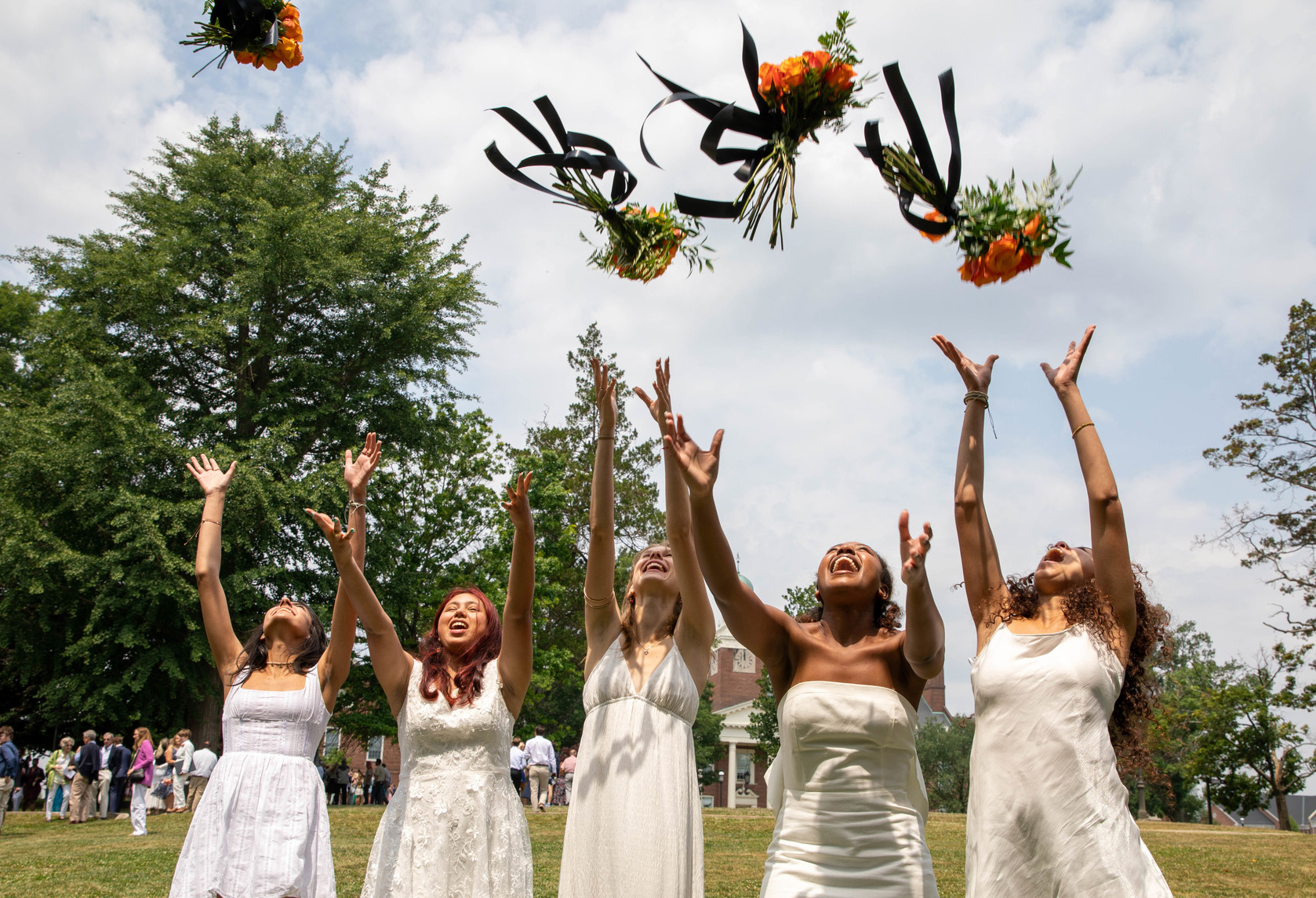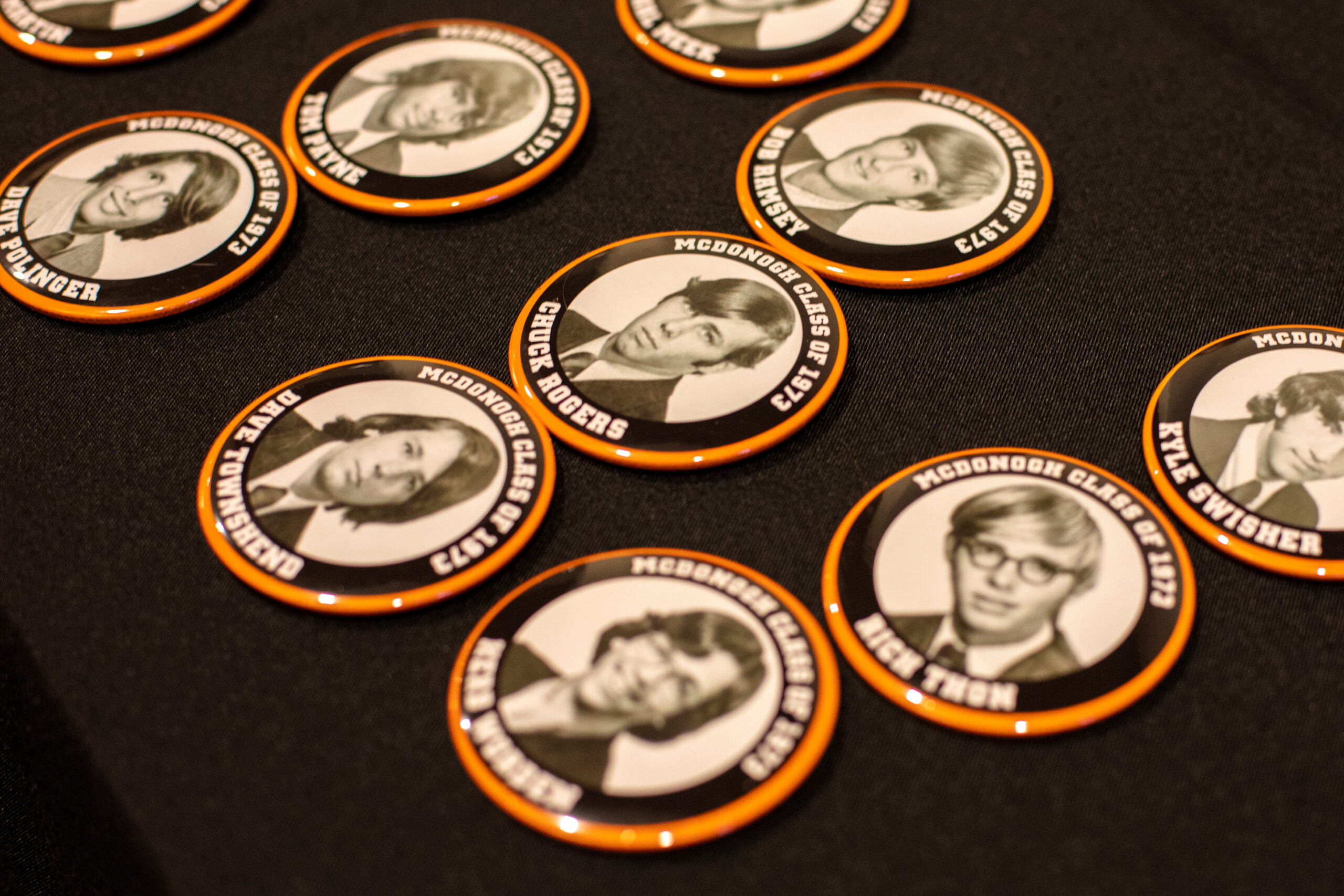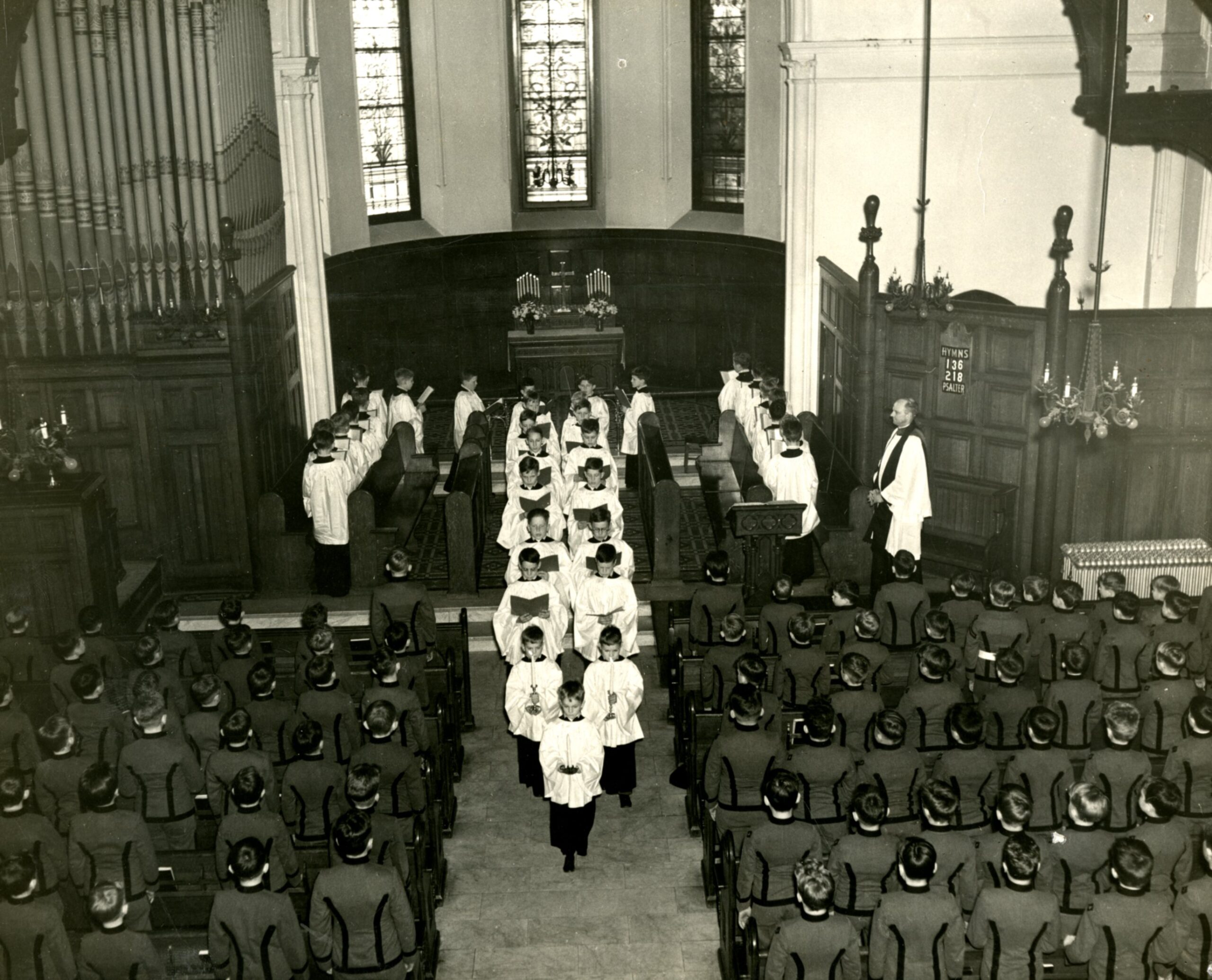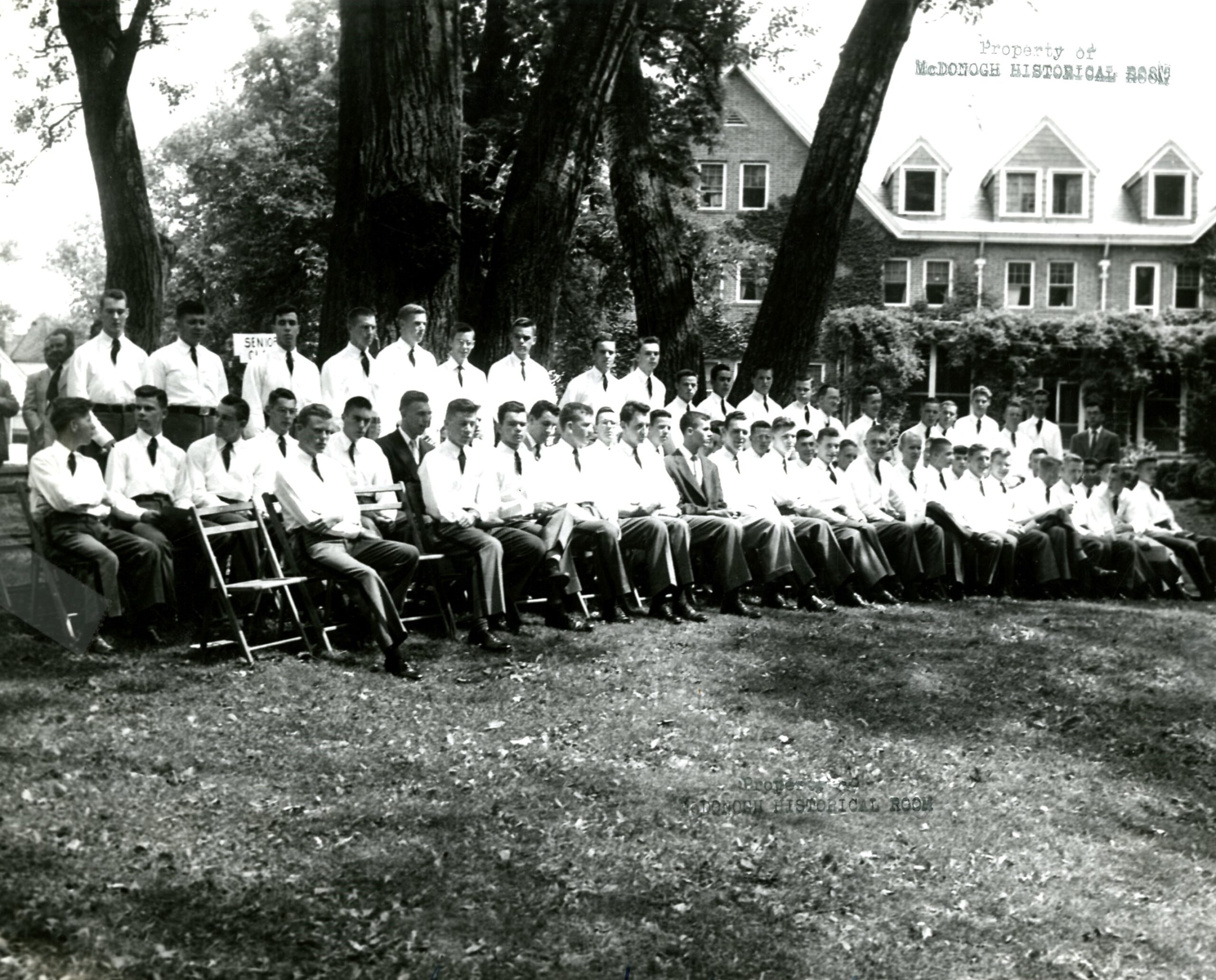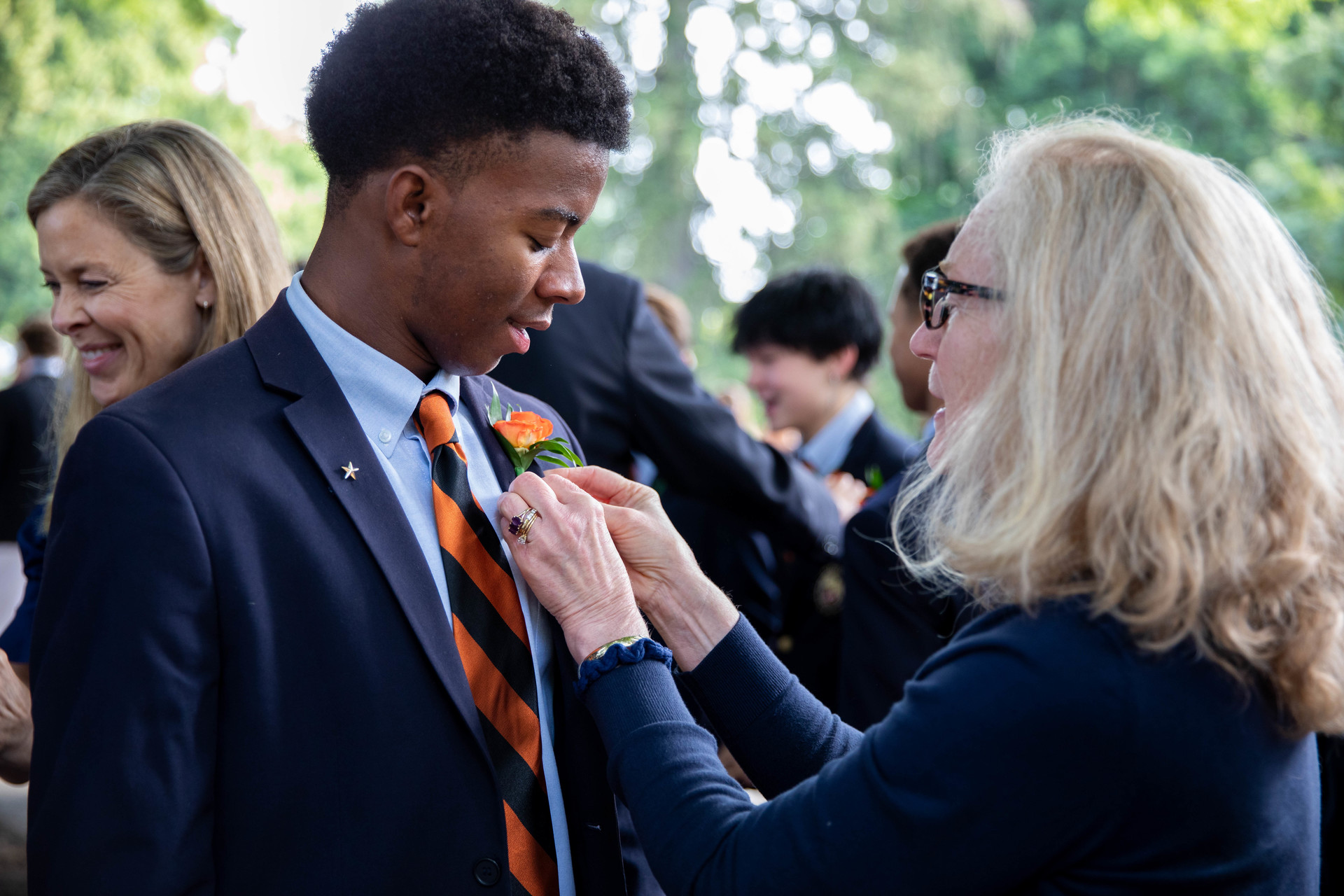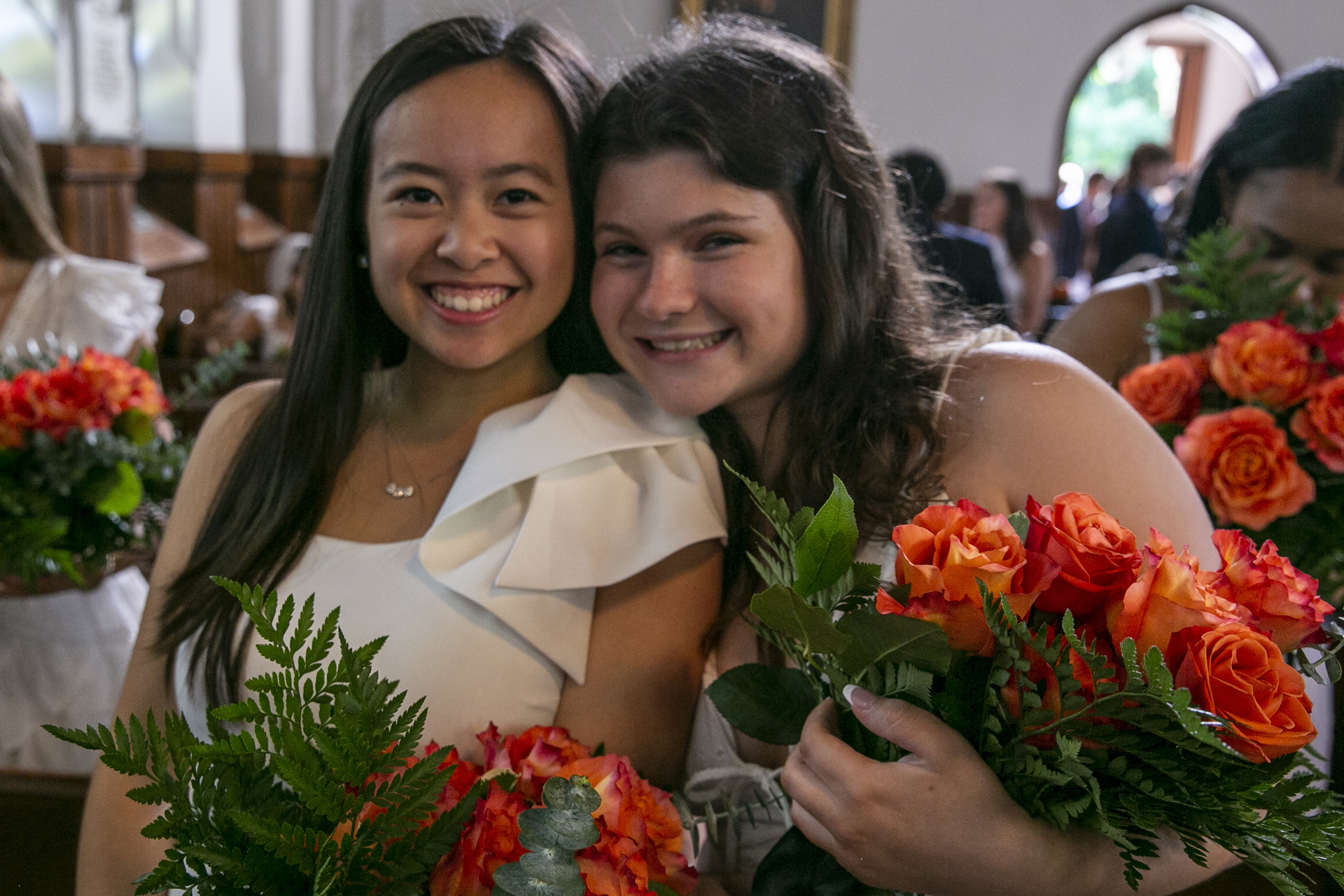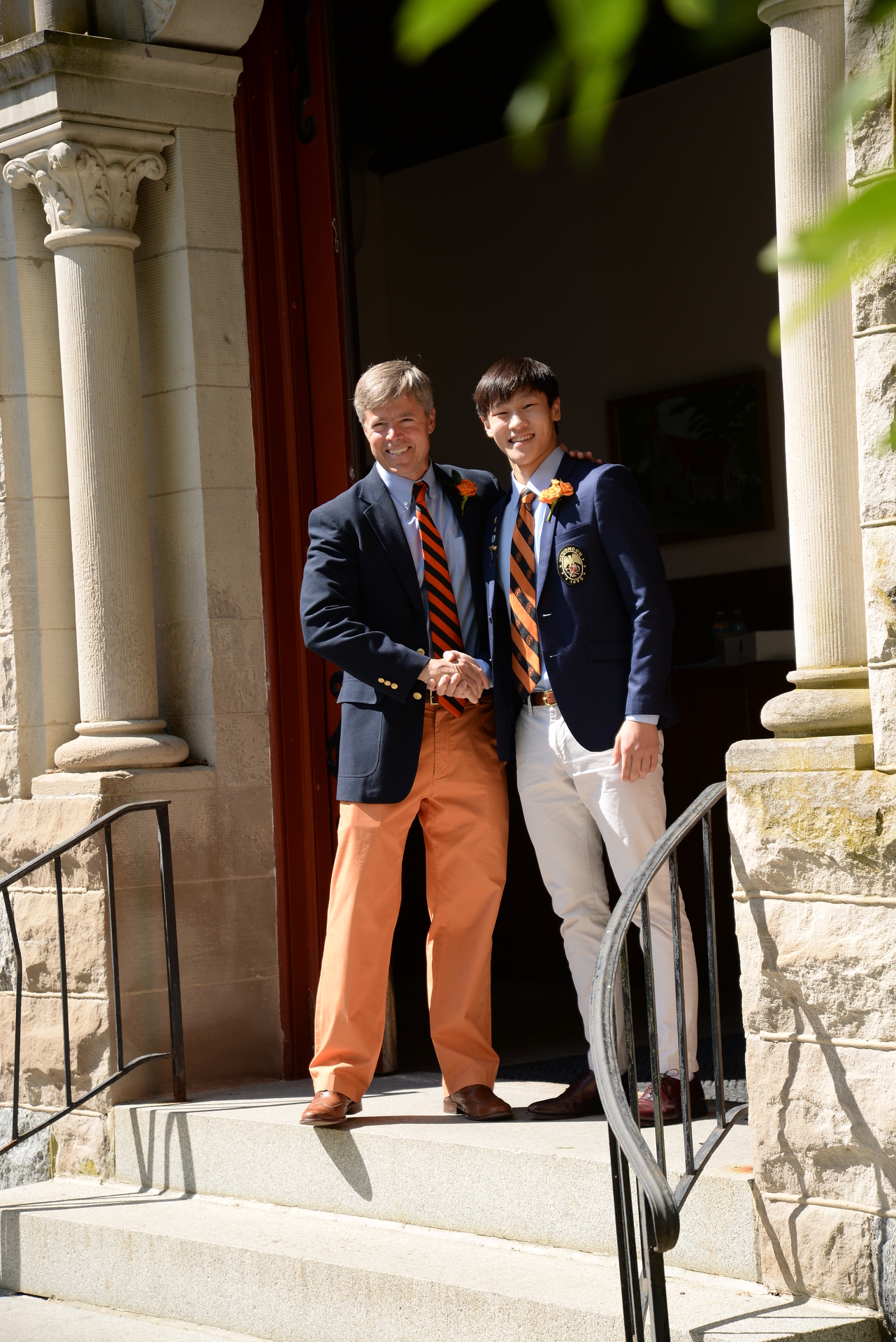“We propose to have something in the way of a Commencement,” Colonel Allan wrote to a Trustee in 1875. He then invited the Superintendent of Public Instruction to speak at the event where seven boys were awarded honorable discharges. Five other boys received Prize Scholarships, an honor that gave them an extra year of study. Boys who did not receive either the discharge or scholarship had to leave “after the session in which they reach their sixteenth birthday.”
In 1916, McDonogh’s first Baccalaureate ceremony was held in Tagart Chapel, and at Commencement, the students were designated as graduates for the first time. The age limit for students was still in effect, and in 1922, a story in The Week clarified, “At commencement students who have completed the full course of study receive diplomas; students who have not completed the full course of study but have reached the age limit receive certificates. A certificate is not to be confused with certification which means they qualify for college admission.”
In an article in The Week about the Class of 1923 Commencement, it was reported that “the most important part of the program was the address by Dr. L. Wardlaw Miles, Headmaster of the Gilman Country School. Dr. Miles did not use as the subject of his talk the usual Commencement address title ‘Success.’ Instead, he talked for a short while on something more vitally important to graduates than success, the helping of ones fellows.” In addition to their diplomas, the 1923 graduates also received bank books with an initial deposit, presented by a member of the Class of 1901, as an incentive to save.
For many years, Commencement Day also included military drills, and alumni were encouraged to attend. The 54th Annual Commencement of the School in 1927, the largest to date, also included a riding exhibition and horse show as well as “exhibitions of the work in the Manual Training Shops and in Drawing, with a showing as to what may be accomplished in the new automobile shop which will be instituted next fall.” The Week reported, “The boys spent the morning getting the grounds, buildings, and themselves prepared to receive visitors, who will arrive early in the afternoon.”
Today, elements of past Commencement ceremonies can be seen in the celebration that traditionally takes place on a Friday in early June. After the Baccalaureate, the graduates gather in Tagart Chapel and then process through the doors and down the hill to Childs Memorial Terrace to the applause of faculty and staff who have guided them on their McDonogh journey. After senior awards are presented, a member of the graduating class, chosen by their peers, gives the Commencement address and the Head of School offers final words and advice. Once the diplomas have been conferred, along with official Alumni Association membership cards, the Dedication Hymn (see story No. 1) is sung by the graduates and alumni in attendance.
Students moving from Lower to Middle School and Middle to Upper School receive certificates of completion at end-of-year ceremonies.
